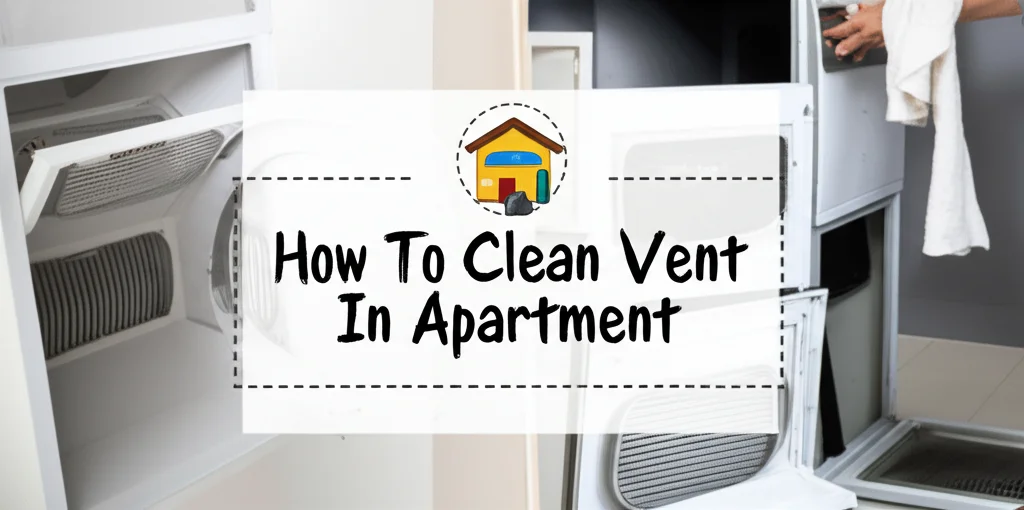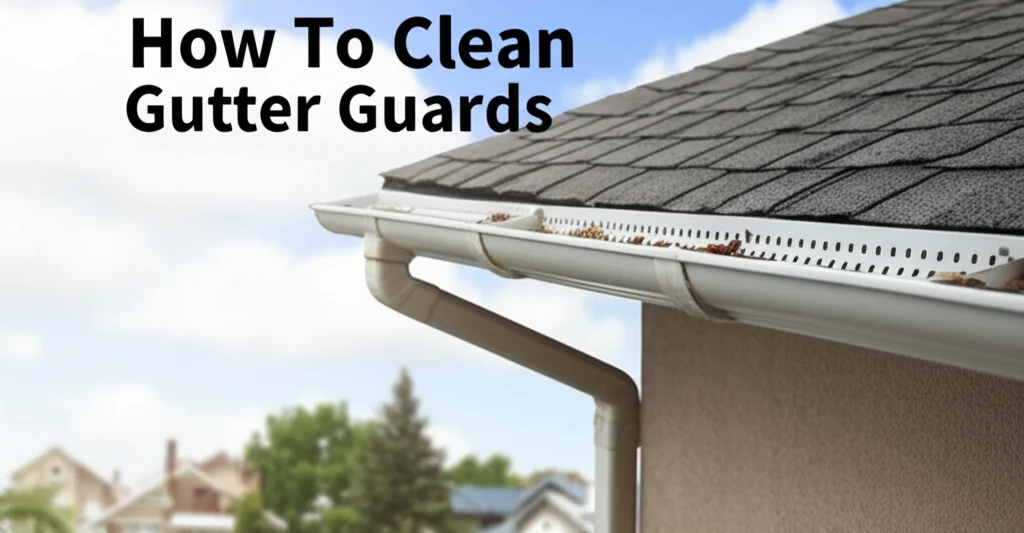· Home Maintenance · 7 min read
How To Clean Dryer Vent In Apartment

Why Cleaning Your Apartment Dryer Vent Matters
Have you ever wondered why your clothes take longer to dry, or why your laundry room feels unusually warm? It might be a clogged dryer vent! Cleaning your dryer vent is a crucial home maintenance task, especially when living in an apartment. Lint buildup isn’t just an inconvenience; it’s a serious fire hazard. A clean dryer vent improves dryer efficiency, saves you money on energy bills, and most importantly, keeps you and your neighbors safe. This article will guide you through everything you need to know about how to clean a dryer vent in an apartment, step-by-step.
Takeaway:
- Regular dryer vent cleaning prevents fires.
- It improves dryer efficiency and saves energy.
- Cleaning is a manageable DIY task for apartment dwellers.
Quick Answer:
Cleaning your apartment dryer vent involves disconnecting the vent from the dryer, removing lint buildup with a vent cleaning kit or vacuum, and ensuring the exterior vent is clear of obstructions. This process should be done at least once a year, or more frequently if you do a lot of laundry.
Understanding Dryer Vent Systems in Apartments
Before diving into the cleaning process, let’s understand how dryer vents work in apartments. Unlike single-family homes, apartment dryer vents often have shared ductwork. This means your vent connects to a larger system serving multiple units. Because of this shared system, it’s even more important to keep your section of the vent clean to avoid impacting your neighbors and potentially creating a fire risk for the entire building. Understanding your apartment’s specific vent setup is the first step to effective cleaning.
- Vent Material: Dryer vents are typically made of flexible metal or plastic. Metal is more durable and less likely to trap lint.
- Vent Length: Shorter vents are easier to clean and maintain. Longer vents require more frequent cleaning.
- Exterior Vent: The vent exits your building through an exterior wall. This opening needs to be free of obstructions like bird nests or debris.
- Shared Ductwork: Be mindful of shared ductwork and avoid causing blockages that could affect other apartments.
Tools You’ll Need to Clean Your Dryer Vent
Gathering the right tools makes the job much easier and safer. You don’t need a lot of fancy equipment, but having the essentials is key. Here’s a checklist of what you’ll need to clean your dryer vent in your apartment:
- Dryer Vent Cleaning Kit: These kits typically include a long, flexible brush and extension rods. You can find them at most hardware stores.
- Vacuum Cleaner: A vacuum with a hose attachment is essential for removing loose lint.
- Screwdriver: You’ll need a screwdriver to disconnect the vent from the dryer.
- Lint Brush: A small brush for cleaning around the dryer and vent opening.
- Gloves: Protect your hands from dust and debris.
- Mask: A dust mask will prevent you from inhaling lint particles.
- Aluminum Foil Tape: For resealing the vent connection (do not use duct tape).
Step-by-Step Guide to Cleaning Your Dryer Vent
Now, let’s get to the cleaning process! Follow these steps carefully to ensure a thorough and safe cleaning. Remember to always disconnect the power to your dryer before starting.
- Disconnect the Dryer: Unplug the dryer from the electrical outlet. This is a crucial safety step.
- Detach the Vent: Carefully disconnect the dryer vent from the back of the dryer. Use a screwdriver to loosen the clamp.
- Vacuum the Dryer Connection: Use the vacuum hose to remove any loose lint from the dryer’s vent connection.
- Clean the Vent Hose: Insert the dryer vent cleaning brush into the vent hose and push it through, rotating as you go. Add extension rods as needed to reach the full length of the vent.
- Vacuum the Vent Hose: After brushing, vacuum the inside of the vent hose to remove loosened lint.
- Check the Exterior Vent: Go outside and inspect the exterior vent opening. Remove any obstructions like bird nests, leaves, or debris.
- Reconnect the Vent: Reattach the vent hose to the dryer and secure it with a clamp. Use aluminum foil tape to seal the connection for a tight fit.
- Test the Dryer: Plug the dryer back in and run a short test cycle to ensure proper airflow.
Dealing with Difficult Blockages
Sometimes, you might encounter stubborn blockages that are difficult to remove with a brush and vacuum. Don’t force anything, as you could damage the vent. Here are a few tips for dealing with these situations:
- Compressed Air: Use compressed air to dislodge stubborn lint clumps. Be careful not to blow lint into the dryer itself.
- Wet/Dry Vacuum: A wet/dry vacuum can be helpful for removing damp lint.
- Professional Help: If you’re unable to clear the blockage yourself, consider hiring a professional dryer vent cleaning service. They have specialized tools and expertise to handle complex situations. You can find more information about maintaining a clean home at https://www.beacleaner.com/how-to-clean-luxury-vinyl-plank-flooring/.
How Often Should You Clean Your Apartment Dryer Vent?
The frequency of cleaning depends on how often you use your dryer and the type of fabrics you typically dry. However, a good rule of thumb is to clean your dryer vent at least once a year. If you do large loads of laundry frequently, or if you dry a lot of lint-producing fabrics like towels and blankets, you should clean it more often – perhaps every six months. Regular cleaning prevents buildup and ensures optimal dryer performance.
- Annual Cleaning (Minimum): For average laundry use.
- Semi-Annual Cleaning: For frequent laundry use or lint-producing fabrics.
- Monitor Dryer Performance: If you notice longer drying times or excessive heat, it’s a sign that your vent needs cleaning.
Preventing Future Lint Buildup
Cleaning your dryer vent is important, but preventing lint buildup in the first place is even better. Here are a few tips to help you minimize lint accumulation:
- Clean the Lint Trap After Every Load: This is the single most important thing you can do to prevent lint buildup.
- Use Dryer Balls: Dryer balls help to separate clothes and reduce lint production.
- Avoid Overloading the Dryer: Overloading restricts airflow and increases lint buildup.
- Inspect the Vent Regularly: Periodically check the vent hose for any signs of damage or blockage.
- Consider a Lint Filter: Install a lint filter on your vent hose to capture lint before it reaches the vent. Keeping your floors clean is also important, and you can learn more about that here: https://www.beacleaner.com/how-to-clean-floor-grout-without-scrubbing/.
FAQ About Dryer Vent Cleaning in Apartments
Q: Can I use a leaf blower to clean my dryer vent?
A: While a leaf blower can be used, it’s generally not recommended. The high airflow can damage the vent and blow lint into the dryer. A dryer vent cleaning kit is a safer and more effective option.
Q: Is it safe to clean the dryer vent myself?
A: Yes, it’s generally safe to clean your dryer vent yourself, as long as you follow the safety precautions outlined in this article, such as disconnecting the power and wearing a mask.
Q: What if I can’t reach the exterior vent?
A: If the exterior vent is inaccessible, contact your apartment management or a professional dryer vent cleaning service.
Q: How will I know if my dryer vent is clogged?
A: Signs of a clogged dryer vent include longer drying times, clothes feeling hot to the touch after drying, and a burning smell.
Conclusion
Cleaning your dryer vent in an apartment is a simple yet vital task for maintaining a safe and efficient home. By following the steps outlined in this guide, you can significantly reduce the risk of a dryer fire and save money on your energy bills. Remember to clean your vent at least once a year, and more often if needed. Prioritizing dryer vent maintenance is a small effort that yields big rewards. Don’t delay – take action today to ensure a safer and more comfortable living space. If you’re looking for more ways to keep your apartment sparkling, check out this guide on https://www.beacleaner.com/how-to-remove-mold-from-painted-walls/.




